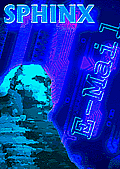Ägypten - Free Software Sphinx-Clients
 The project with the
Codename Ägypten realizes Free Software components for
E-Mail encryption according to the Sphinx standard of the german
Bundesamt
für Sicherheit in der Informationstechnik (BSI, german
authority for security for information technology).
Main goals have been the popular E-Mail programms KMail and Mutt.
The project with the
Codename Ägypten realizes Free Software components for
E-Mail encryption according to the Sphinx standard of the german
Bundesamt
für Sicherheit in der Informationstechnik (BSI, german
authority for security for information technology).
Main goals have been the popular E-Mail programms KMail and Mutt.
The call for tenders has been won by the three companies Intevation (project lead, quality assuarance, tests), Klarälvdalens Datakonsult (KMail and other KDE conponents) and g10 Code (all crypto components and the technical concept). With project start in October 2001, Ägypten was offically and successfully finished in Novermber 2002. The project management team consisted of two persons, the lead was with Bernhard Reiter and he was backed by Jan-Oliver Wagner. The development team counted 6 heads.
Encryption of great importance for government and economy
 The technical framework of Sphinx is based on the specification S/MIME
and involves the assignment and accreditation of certificates for
digital transactions such as E-Mail.
To build such national infrastructures it is a pre-condition
to provide all participants with tools to read and verify
other people's E-Mails.
The technical framework of Sphinx is based on the specification S/MIME
and involves the assignment and accreditation of certificates for
digital transactions such as E-Mail.
To build such national infrastructures it is a pre-condition
to provide all participants with tools to read and verify
other people's E-Mails.
The KMail version with the new crypto components has proven good interoperability with proprietary systems during official tests performed by SchlumbergerSema.
All developments went upstream into main developments
 The concept for the cryptography implementation was based on
a component oriented approach to ensure high flexibility and verifiability.
The concept for the cryptography implementation was based on
a component oriented approach to ensure high flexibility and verifiability.
The cryptographic components have been incorporated into the well known crypto-application GnuPG with extending the OpenPGP support by S/MIME support and various small tools. All elements are adopted for the main development and eventually are automatically available to everyone who installs and uses GnuPG.
Also, the numerous extensions and improvements to KMail have been adopted are already included and therwith generally available since KDE release 3.1. Not at least this was made possible through extensive cooperation with the corresponding KDE developers.
The upstream integration into the main developments represents a major success of the project.
 Sitemap
Sitemap Deutsch
Deutsch